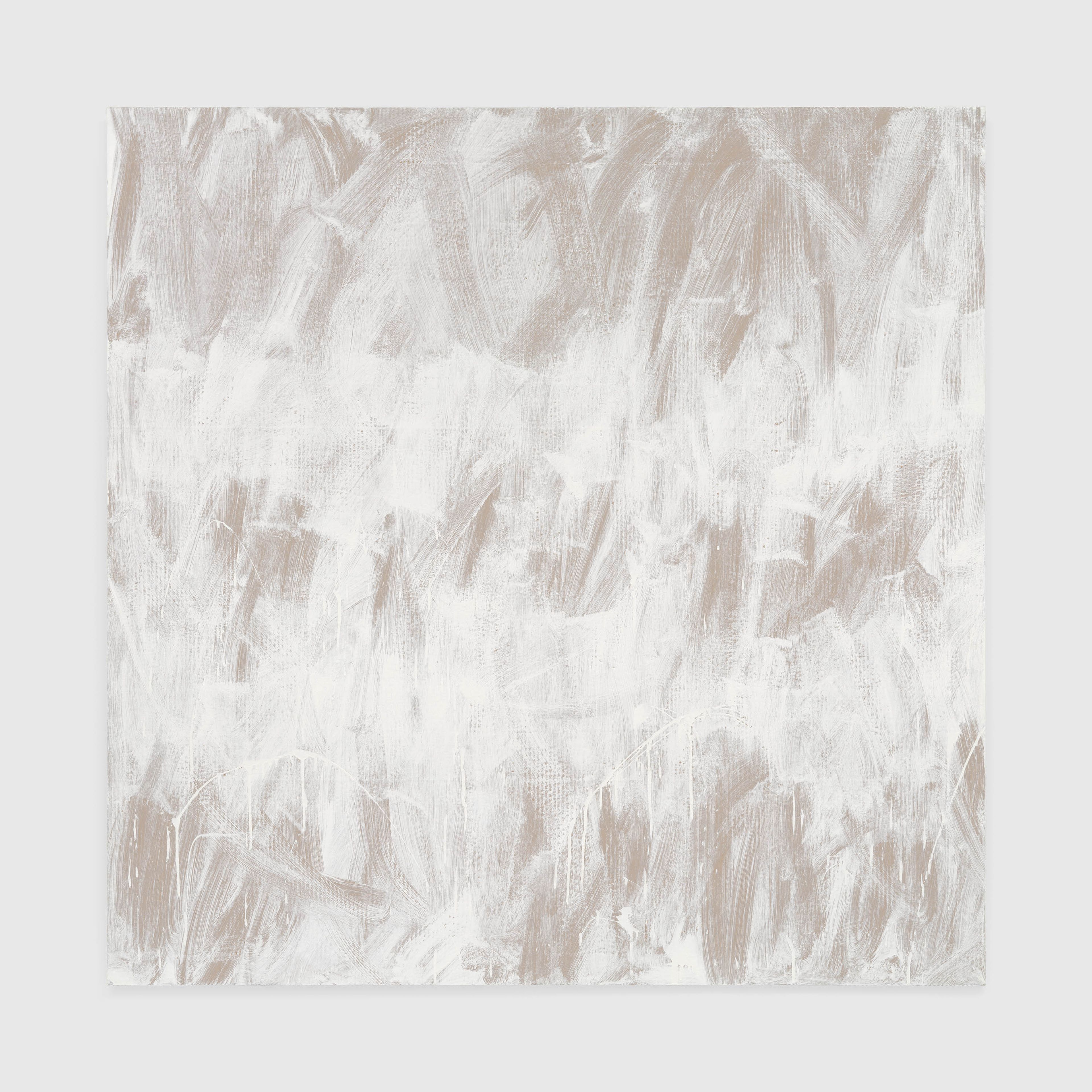Exceptional Works: Robert Ryman
One, 1969
Enamelac on corrugated paper 60 1/4 x 60 inches 153 x 152.4 cm

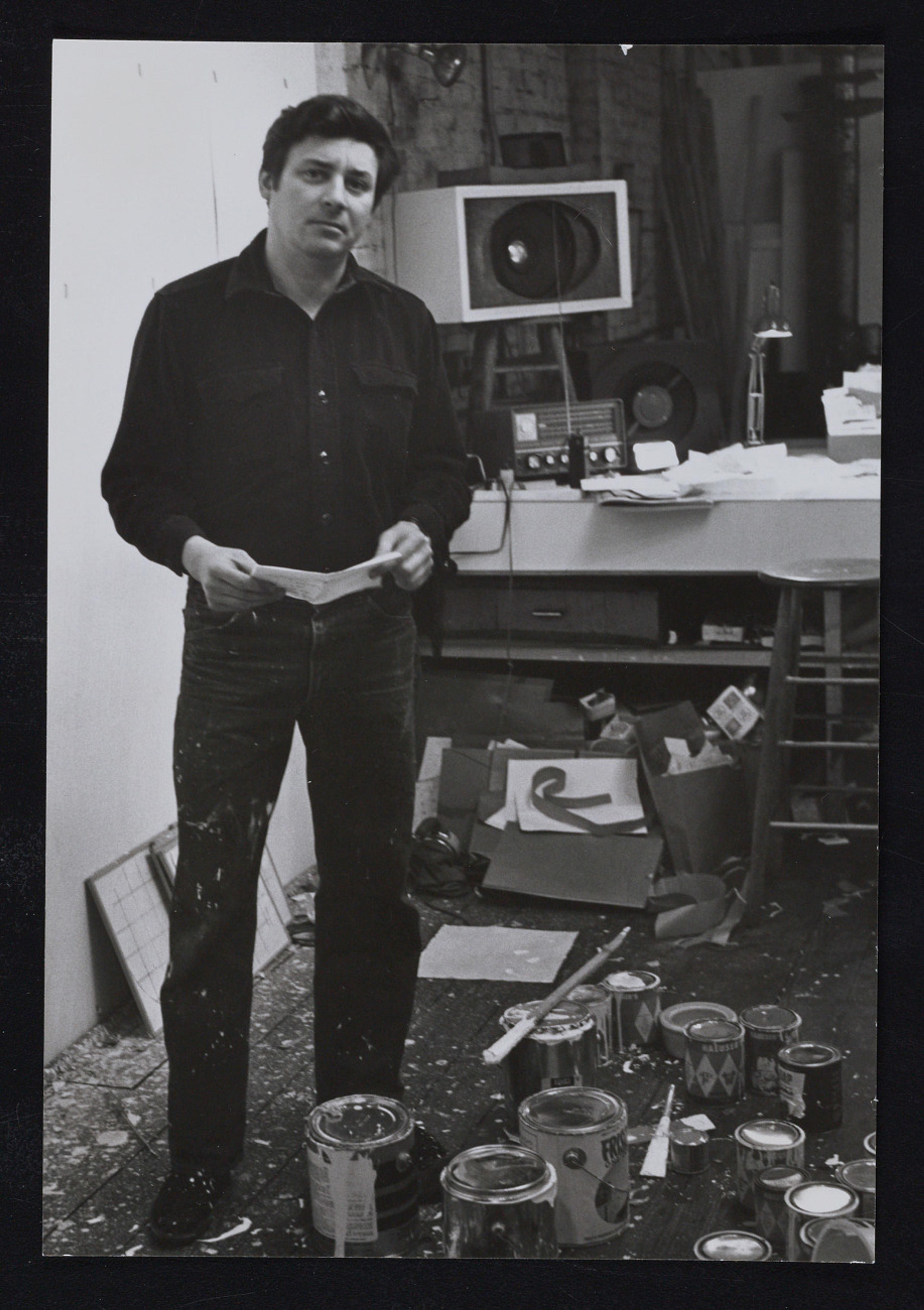
Robert Ryman in his studio, New York, 1969. Photo by Dorothy Levitt Beskind
One is from a body of work that Ryman made in 1969 using Enamelac—a flat pigmented shellac primer—on 60-by-60-inch corrugated paper panels. Here, the support is visible in several areas beneath the thin, overlapping, loose strokes of paint, which have a light, rhythmic, and highly gestural quality to them. As the artist notes of these works: “I thought [Enamelac] wouldn’t affect the paper the way oil would. It would not cause it to deteriorate later, with the oil eating the paper. And also it sealed the paper so it was really the ideal medium for this situation.”
Ryman’s use of a square format, too, is important: “It was the square,” he later said, “which seemed to me the perfect space to paint on…. Everything is equal.”
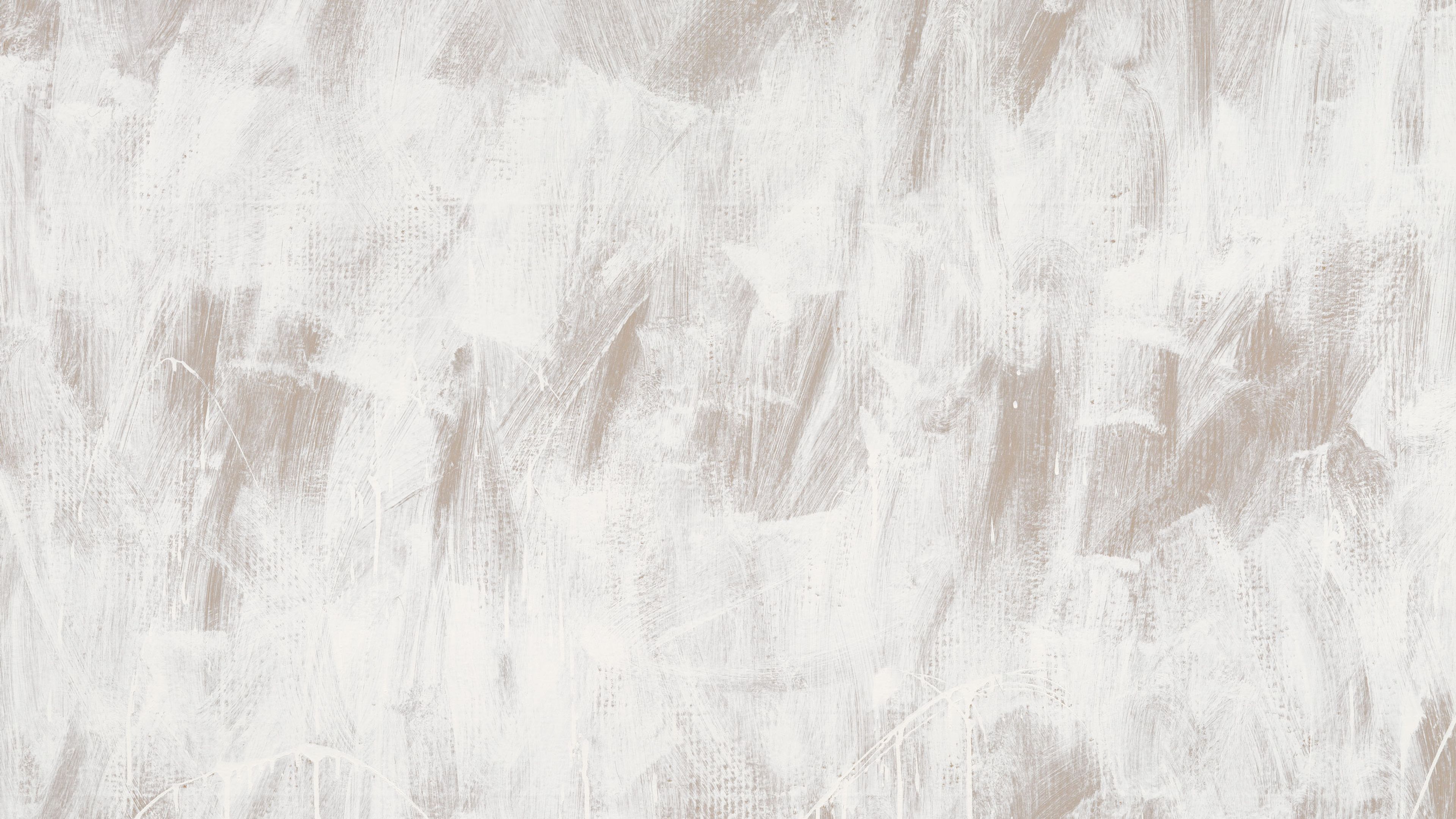
Robert Ryman, One, 1969 (detail)
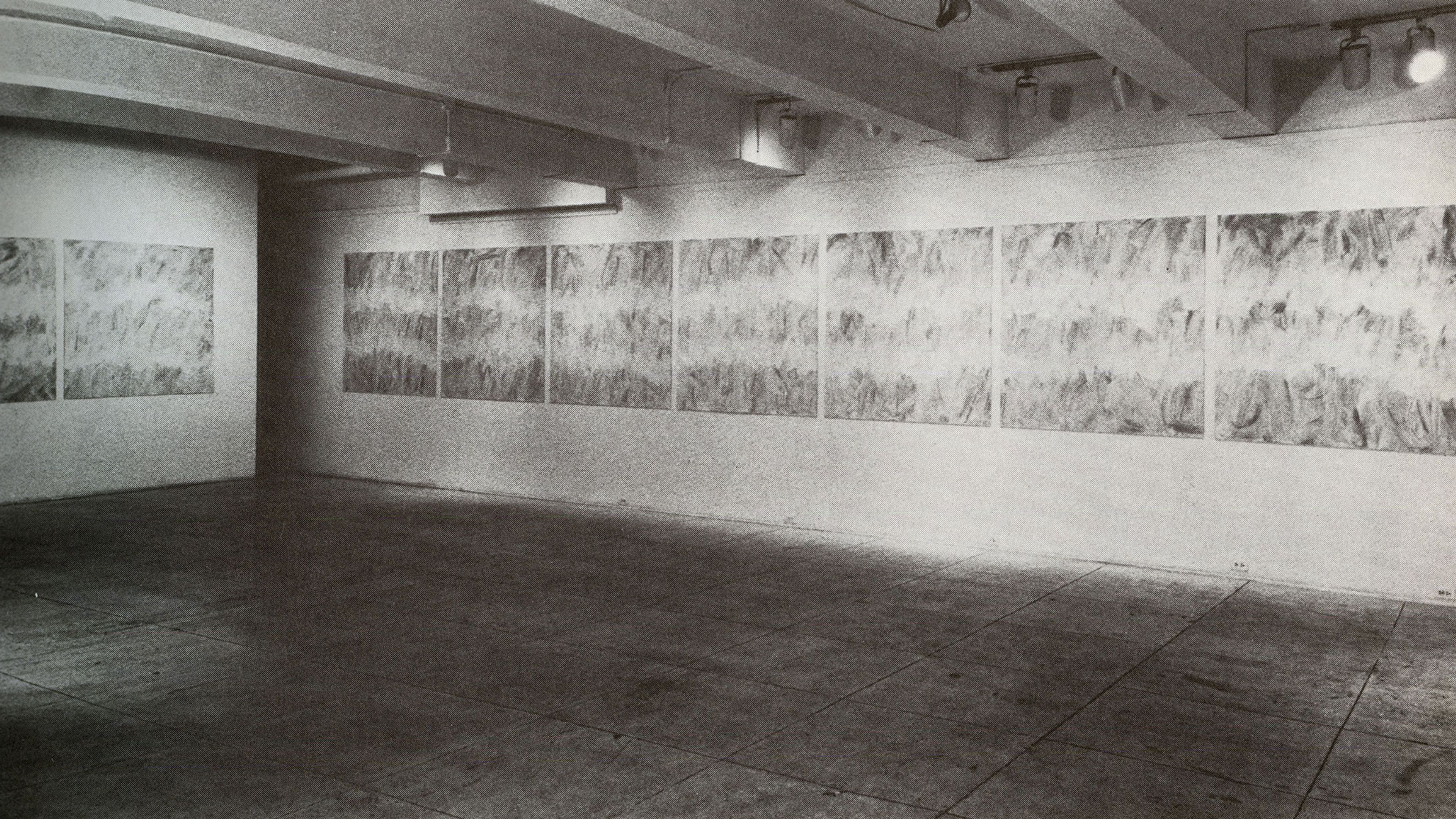
Installation view, Robert Ryman, Fischbach Gallery, New York, 1969
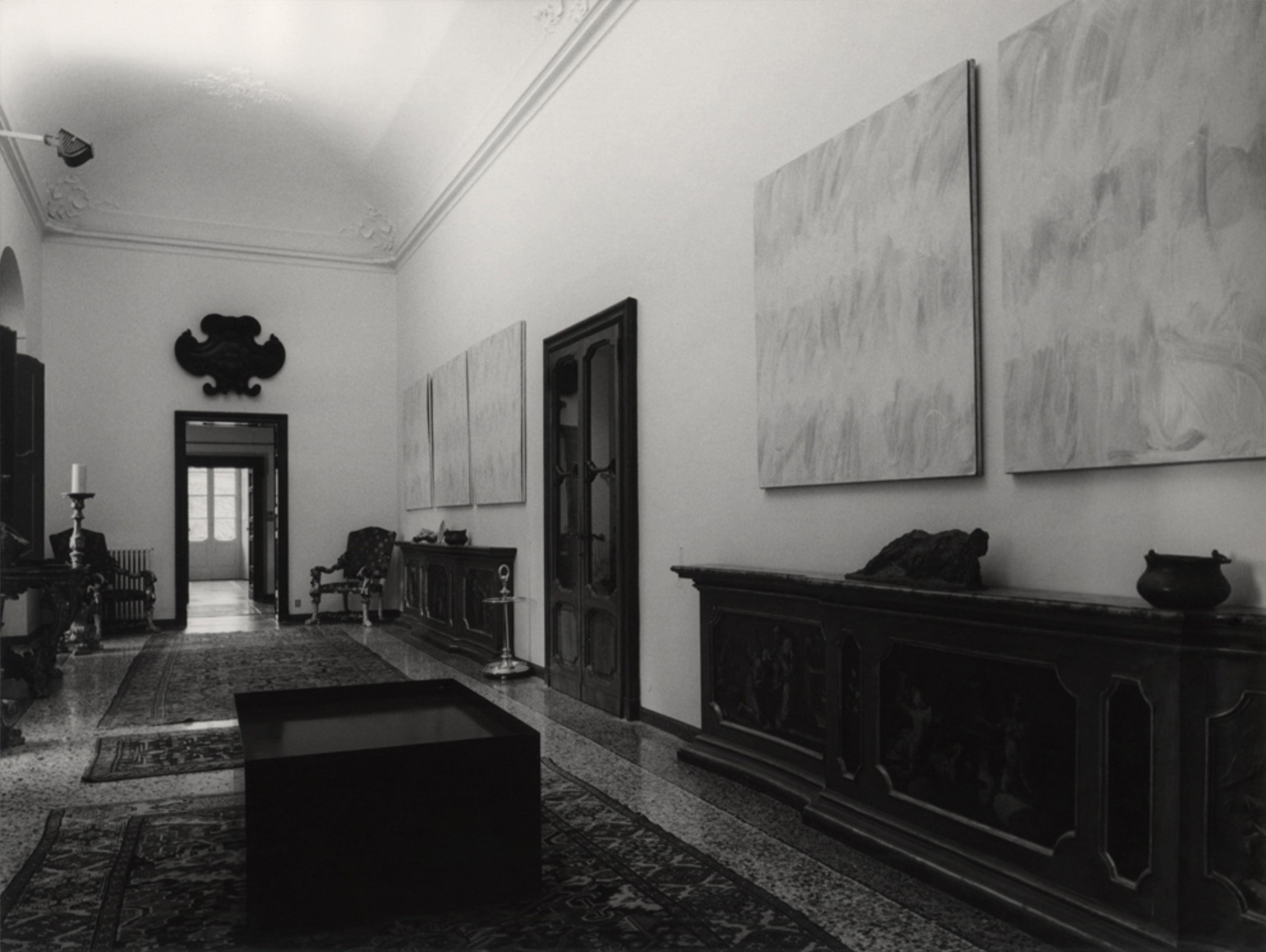
Robert Ryman, V, 1969, installed at Villa Panza, Varese, Italy, c. early 1970s
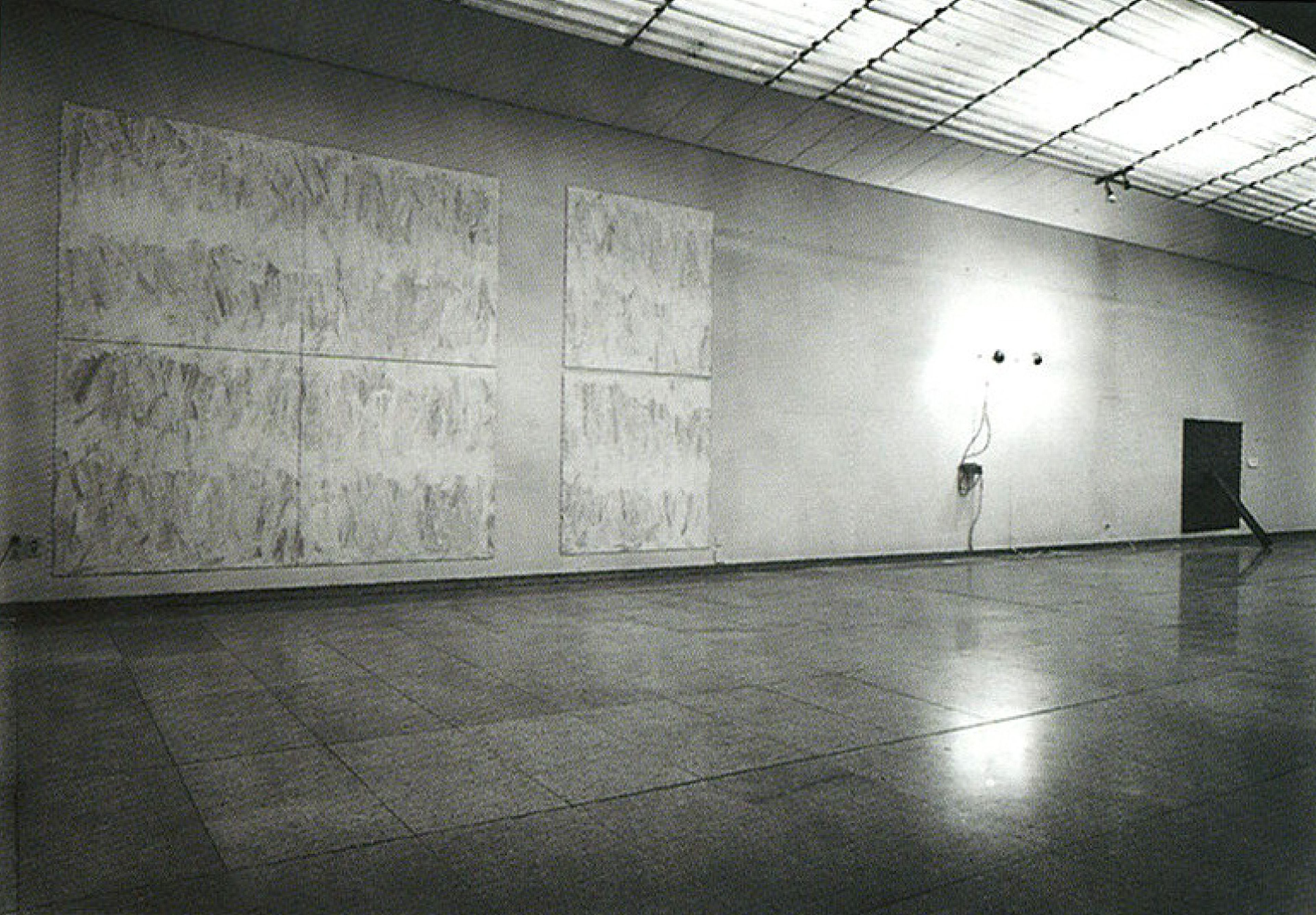
Installation view, Whitney Revision Painting #1 and Whitney Revision Painting #2 (both 1969), conceptual art, arte povera, land art, Galleria Civica d’Arte Moderna, Turin, 1970
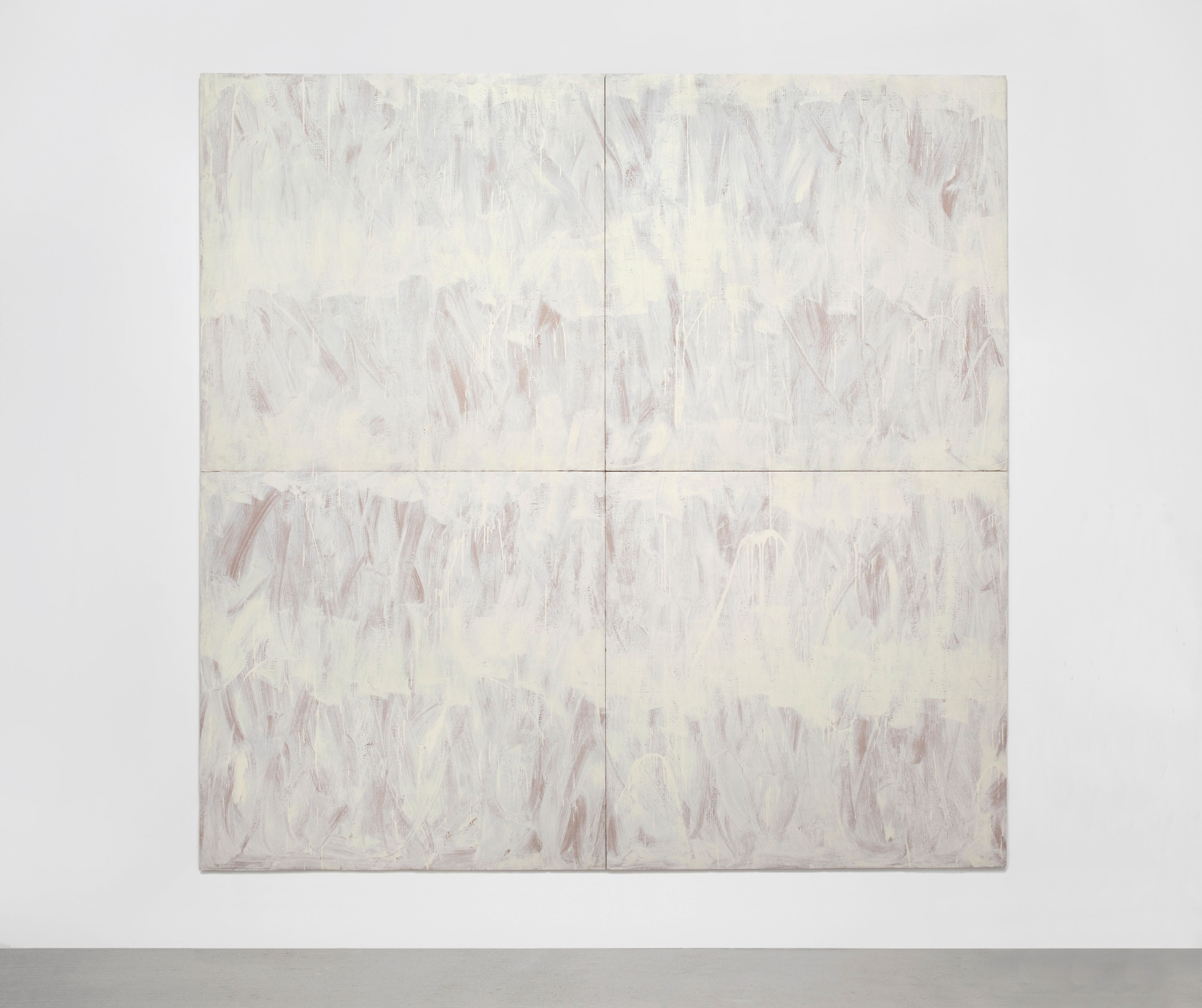
Robert Ryman, Whitney Revision Painting 1, 1969
“Ryman was taking painting apart to see how it worked, then reassembling it from degree zero. The support. The surface. The spread of one material over another. The limits.... He always came back from the brink. This is why his paintings are both so quiet and so exciting.”
—Adrian Searle, critic, 2019
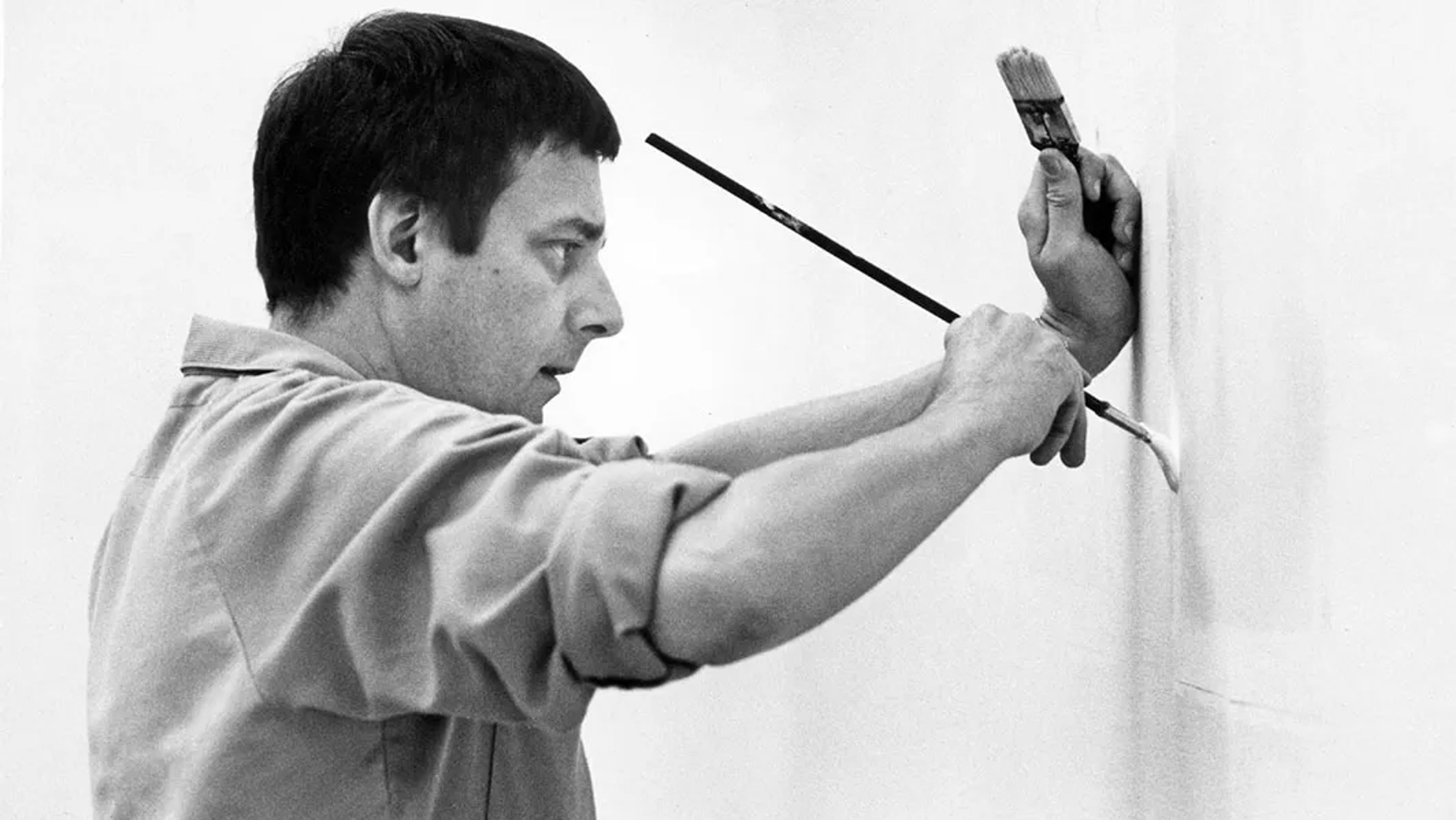
Robert Ryman, 1974
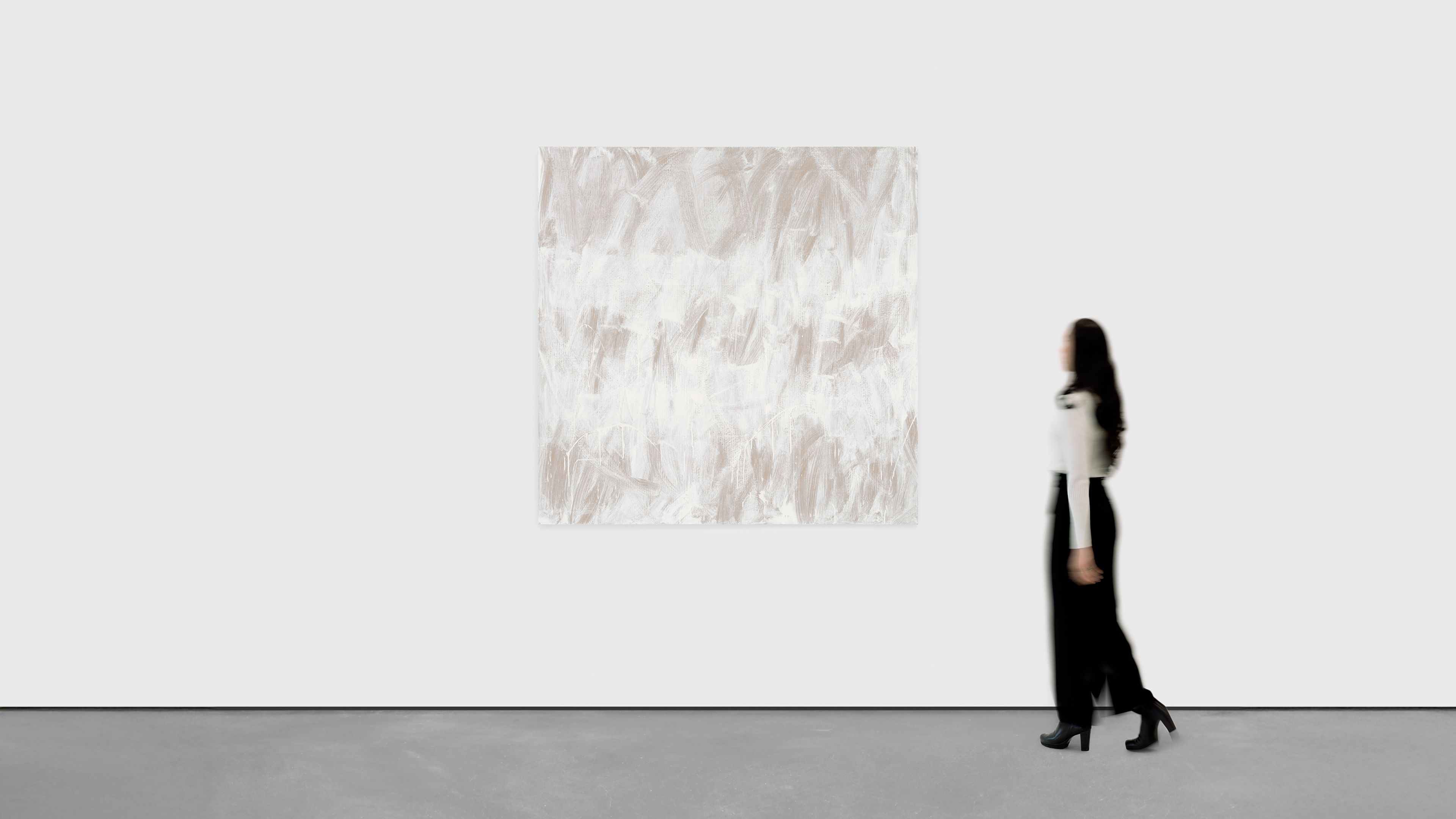

David Zwirner at Art Basel
